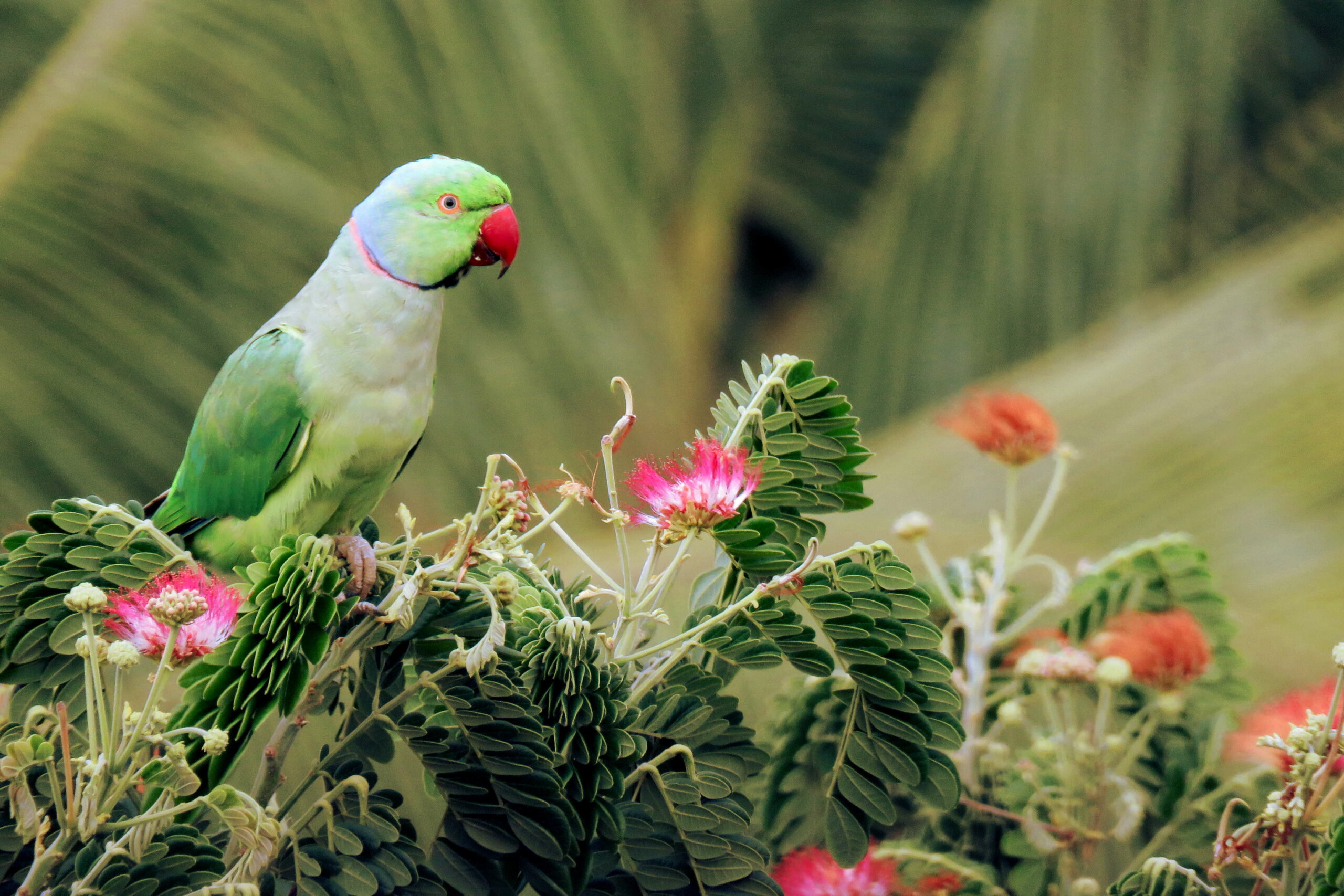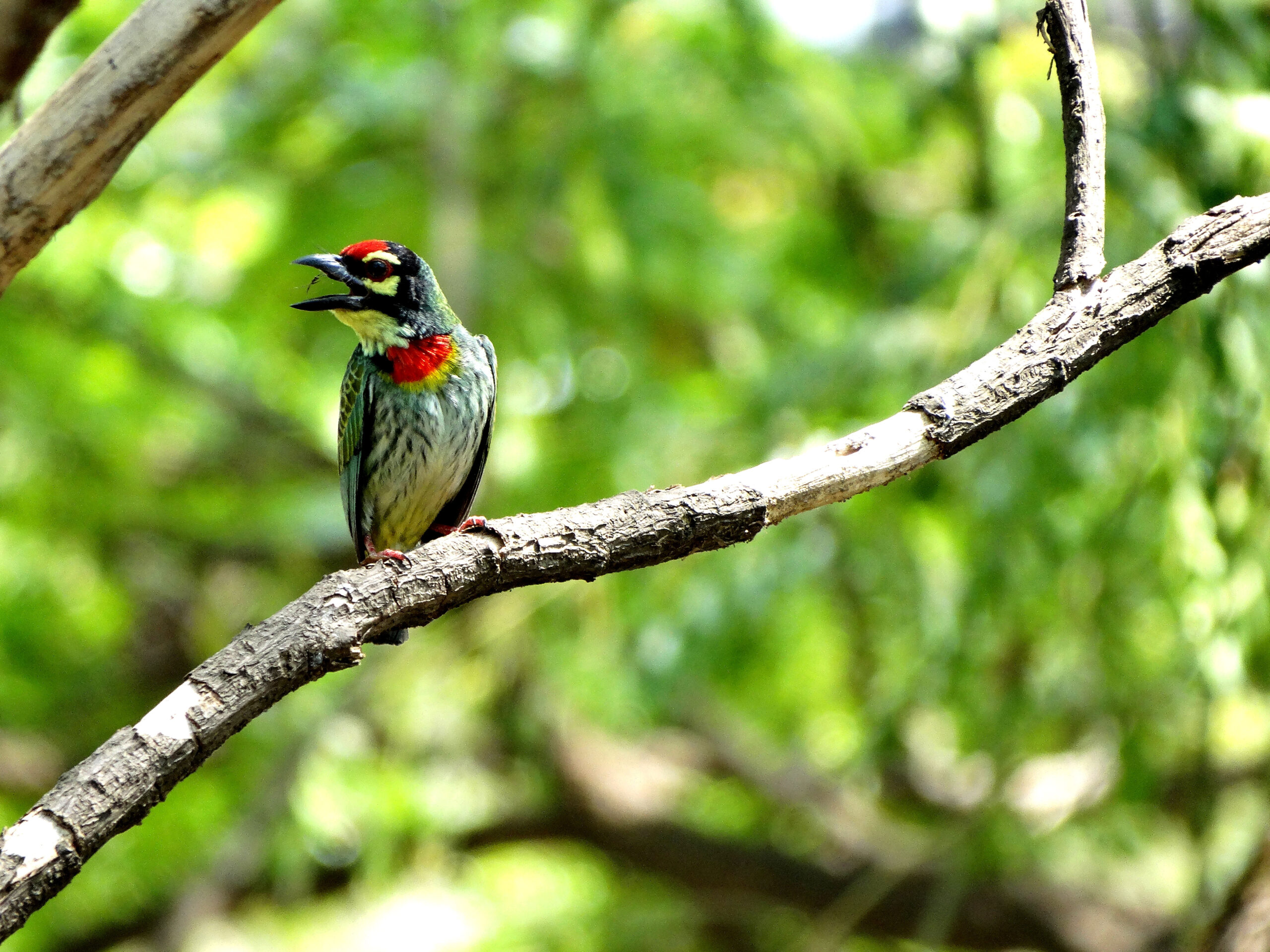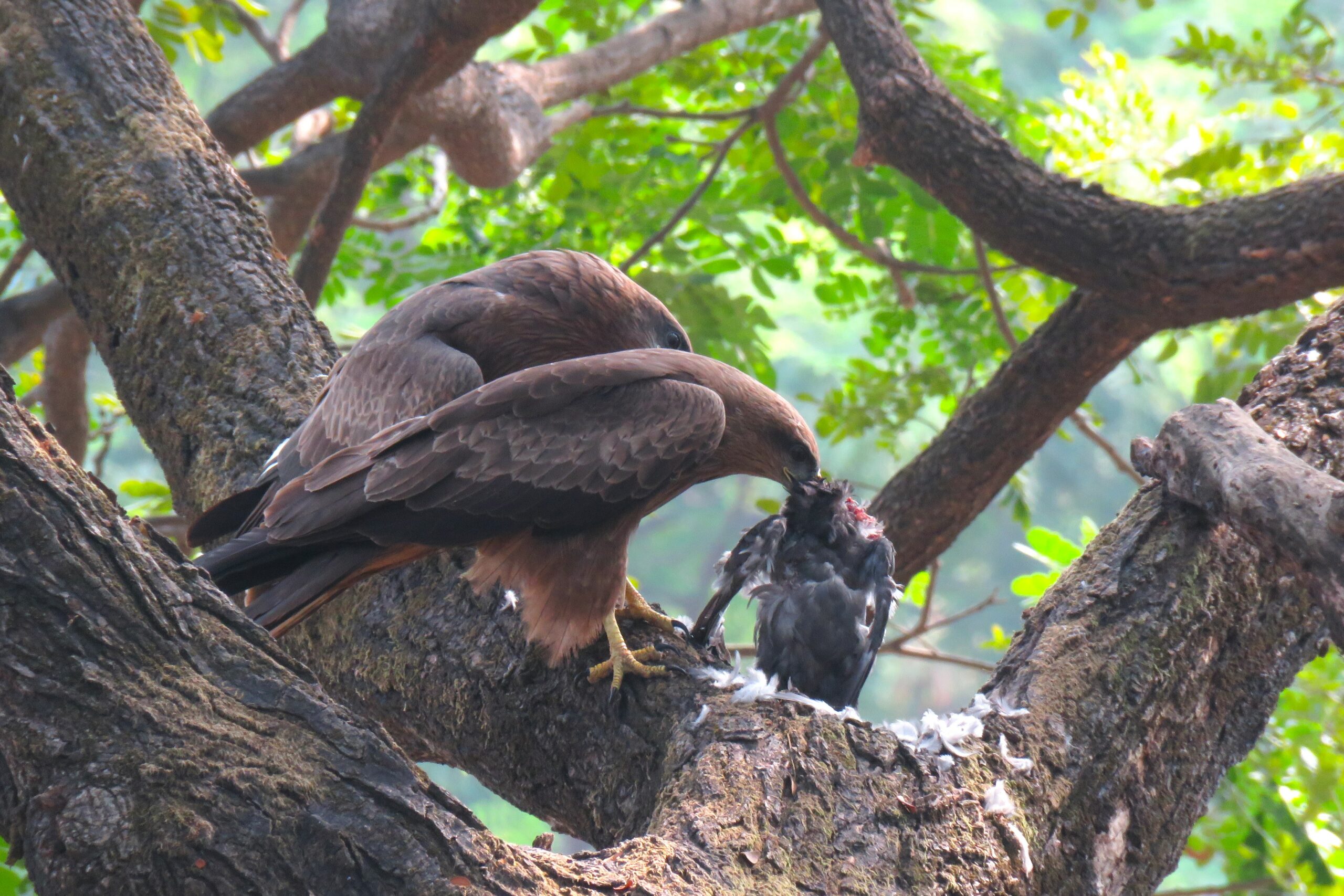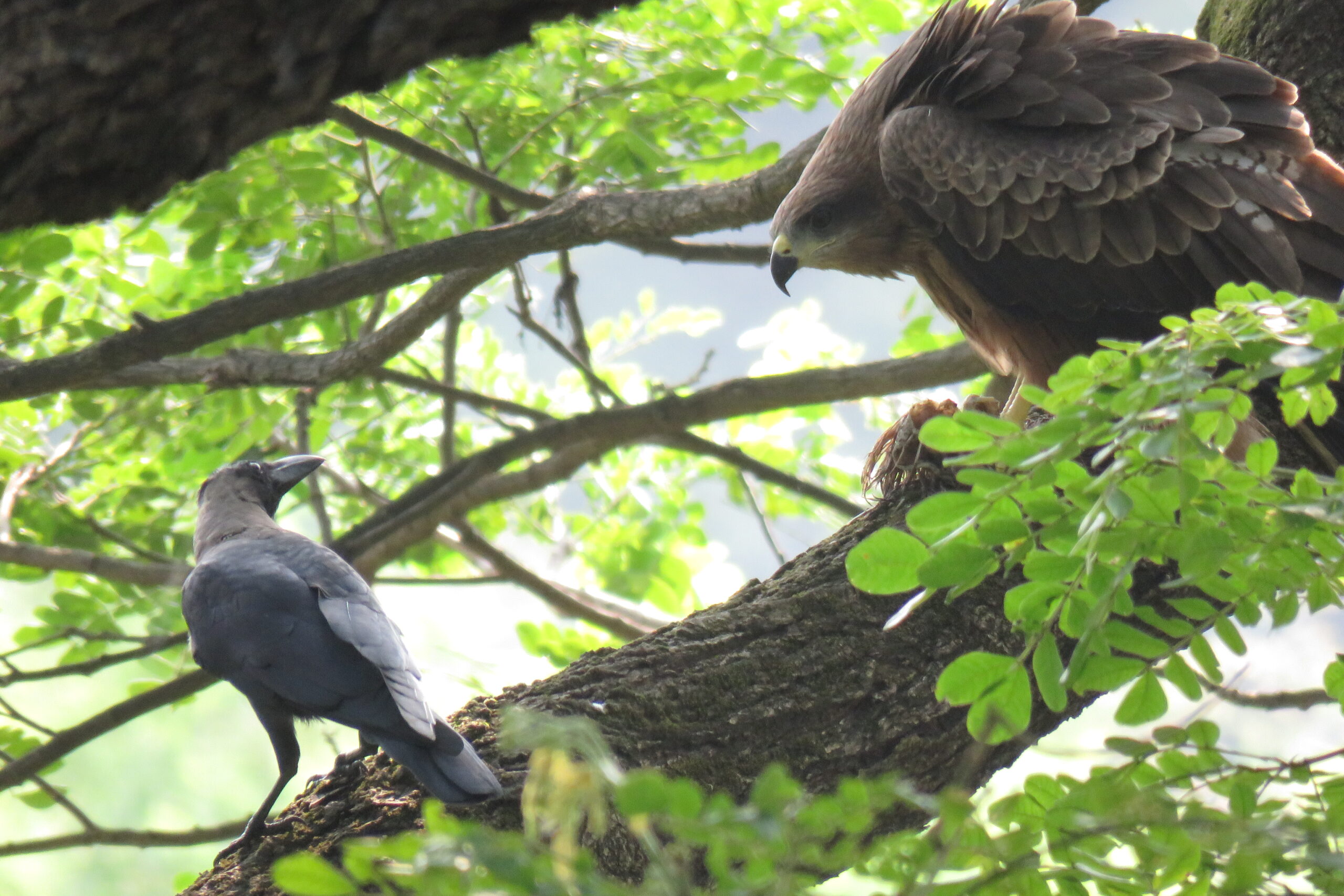
Rose-ringed Parakeet on the Rain Tree
In the crowded city of Mumbai, the exotic Rain tree usually makes news for all the wrong reasons. Its branches are not known to be the strongest and are the first to fall during the city’s infamous monsoons. They are also unfortunately falling prey to the invading mealybugs. Mealybug infestations manifest as a white and powdery substance on the tree and if left unchecked, they can wipe out entire populations of rain trees, as they have done so in the city of Mumbai. Despite this, some gigantic rain trees have survived and continue to thrive in the city.
One such rain tree is seen right outside my office window. For the last 9 years, I have spotted more than 30 species of birds on this one main tree alone! Some species use this tree to build their homes like the Coppersmith barbet and Rose-ringed parakeets, while others like the Chestnut-tailed starling have occasionally used the tree as their evening roosting spot! The rain tree’s strategic location close to an artificial water source, namely the line of AC vents, makes it a great perch for smaller birds like the Indian White-eye, Purple-rumped sunbird and Vigors’s sunbird.

Coppersmith Barbet on Rain Tree
During the scorching summers, these birds perch on the extremities of the tree before venturing towards the water-dripping AC vents. The top canopy of this rain tree is majestic and is favoured among the Pale-billed flowerpeckers and tiny Green warblers. On the other end, the mid-canopy serves as a shaded solitude for Black kites which bring in an assortment of meals to devour like fish, pigeon kill, lizards and rats.


(Left) Black Kites with a Pigeon Kill on a lazy afternoon; (right) Confrontation between Black Kite and House Crow
The Indian grey hornbills also prefer the mid-canopy branches to rest in the mornings, while the House crows and Common mynas make themselves comfortable anywhere on the tree! The incessant calls of the Common tailor birds that hop from one place to the other, fill the acoustic voids of the hot afternoons. No matter what time of the day it is, some part of the rain tree is an abode to some creature or the other. Palm squirrels and monkeys also jostle up and down the tree, particularly during the summers. The monkeys can be seen scrapping the loose outer bark of the tree and eating insects that are found beneath it. The palm squirrels are seen foraging around the tree, sometimes feeding on the flowers. Prior to the monsoons, Garden lizards (Calotes sp.) are seen on the barks, with males showcasing their territorial displays with vibrant orange and black hues.
Although the rain tree may not be favoured by the city folk, this tropical tree generously and unconditionally casts a verdant canopy that beckons to birds and animals that seek refuge. One cannot deny that they do indeed serve as a sanctuary for numerous species of birds and mammals, in a city that houses millions of human beings. Trees like this rain tree silently invite an unsuspected onlooker like me to pause amidst life’s chaos, take a moment to observe and marvel at the glorious organisms that we co-inhabit this earth with.
All photos are by Adithi Muralidhar.
About the author: Adithi Muralidhar, a Scientific Officer at Homi Bhabha Centre for Science Education, TIFR Mumbai, merges her love for the environment and design into exciting educational adventures. When she’s not crafting engaging STEM+Arts experiences, you’ll find her blogging about nature on Earthly Notes. Explore her musings on www.earthlynotes.com.





